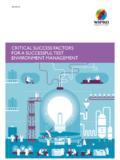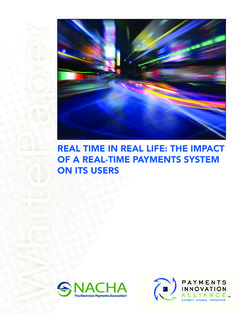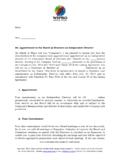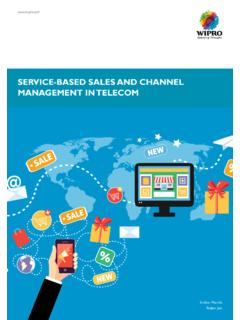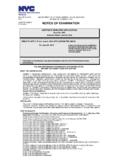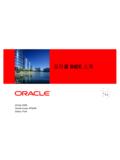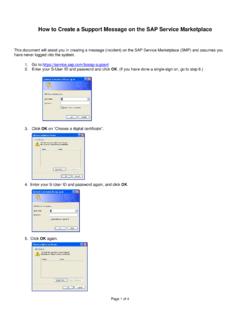Transcription of Intercompany Reconciliation and Settlement - Wipro
1 Wipro CONSULTING SERVICESB usiness Methods SeriesIntercompany Reconciliation and Billing, Senior Manager, Finance & Accounting Transformation Practice Wipro Consulting Services Canal, Consulting Manager, Finance & Accounting Transformation PracticeWipro Consulting Services multi-subsidiary organizations need either daily or monthly Reconciliation and Settlement of Intercompany balances to satisfy requirements that encompass: Treasury/cash planning and operations Regulatory reporting and banking covenants Liquidity reporting Currency optimization Process efficiency and resource optimizationLarge companies also require a robust solution that is scalable and secure, as well as predictable and affordable.
2 Such a solution isn t available from any of the major ERP or finance software providers, nor is it even in their development program. So an alternative solution is required. This document summarizes Wipro Consulting Services point of view on a Target Operating Model and roadmap for large global organizations to create a robust solution for the Reconciliation and Settlement of Intercompany Operating ModelThe Target Operating Model (TOM) is comprised of four integrated components: business processes, organization roles and responsibilities, enabling technology, and data and reporting requirements. They are described below:Business ProcessesThere are two options to consider for the end-to-end process, depending on whether Settlement is monthly or daily.
3 These are shown in Figures 1 and 1: Monthly Settlement of balancesIn a monthly scenario, the transactions are reviewed and reconciled as part of the month-end close prior to Settlement , then reported for group accounts. This approach is better suited to smaller groups with lower volumes of Intercompany transactions and data 2: Daily Settlement of balancesIn a daily scenario, the transactions are settled daily and Intercompany Reconciliation and SettlementThe Reconciliation and Settlement of a company s Intercompany trading balances is a challenge that grows exponentially with the number of subsidiaries. While it s possible to manage a small number of subsidiaries manually, using spreadsheet-based tools or workarounds, there is a tipping point in the growth of each organization that requires a more robust solution.
4 2reviewed and reconciled throughout the month. This approach avoids a peak in the month-end close cycle, streamlining the reporting for group accounts. This approach is better suited to larger groups with higher volumes of Intercompany transactions and data Trading: This is business as usual trading between subsidiaries using standard P2P and O2C processes but specific Intercompany accounts, with liabilities recorded in Accounts Payable or debts being recorded in Accounts Receivable. Pain Point: All data must be correct at the time of entry to enable zero-touch/no rework at the Reconciliation and Settlement process.
5 This includes standard Intercompany vendor/client IDs, currency rates, payment, and trading terms. Failure to establish data standards and trading terms before processing will result in an expansion of the teams required to resolve 1: Monthly Settlement of BalancesIntercompanyTradingExtractInterc ompanyTransactionsReconciliationReportin gSettlementProcessingDisputeManagementFi gure 2: Daily Settlement of Balances3 Extract Intercompany Transactions: Transactions are extracted from the subsidiary ledgers and posted to the Point: It is unlikely that one method of sharing transactions will suit all subsidiaries due to size, volume, local regulations, and the like.
6 Consequently, we recommend three different methods to create options that should reduce resistance to adoption:1. Manual entry directly into the application 2. Semi-automatic transaction extract and posting to a mailbox3. Fully automated extract and data load with controls and exception reportingSettlement Processing: The solution generates Settlement transactions, which are payments from the customer to vendor, when the due date is reached for both trading partners. These payments will result in realized currency gains and losses which should be accounted for (separately from any Intercompany profit) in the accounts of each subsidiary.
7 The duration between the date of the original transaction and subsequent Settlement provides a window for currency forecasting and : Transactions in the solution are balanced and reconciled monthly using automated routines that report exceptions only. These Intercompany balances should also be reconciled to the Group Reporting values at the end of each Point: Automated Reconciliation is required to enable a scalable solution so that transaction volume increases avoid a linear relationship with support team Management: Disputes can be raised manually by trading partners and manual transactions can be applied to resolve disputes.
8 Since this is a manual process that consumes skilled resources, it should be used : Intercompany balances for group consolidation can be loaded into reporting systems or reconciled with subsidiary ledger balances prior to consolidation. Exception and data integrity reports should also be available to enable rapid resolution of any setup and governance steps are required to:1. Employ Master Data Management to maintain standard Intercompany vendor IDs in all subsidiaries, or, alternatively, maintain a mapping table in each subsidiary2. Ensure that the extract in each subsidiary selects all Intercompany transactions and balances3.
9 Identify and report data integrity issues4. Embed controls to assess compliance in the process5. Maintain agreed practices and reduce non-complianceOrganization Roles and ResponsibilitiesFor the Target Operating Model to work effectively, there must be strong governance and a clear understanding of the roles and responsibilities held by those who set and direct strategy, those who establish the processes, and those who actually run and support the system, as well as their relationships with one another, as shown in Figure Board: This organization has global responsibility for the strategic fit and direction, policy, compliance, and change control, as well as management of the governance Process Owner: The Owner controls process refinement, roll-out, data compliance, dispute resolution, 4manages the change board, leads issue resolution, SLA exception resolution, and financial close Application Owner.
10 The IT Application Owner ensures smooth running of the system, ownership of the Support Model, upgrades and improvement execution, issue resolution and testing, maintenance of SLAs, and reporting performance to other Processing: The responsibilities include initiating Intercompany transactions, compliance, reference data setup, assisting with issue resolution, and testing by shared service centers, accounting units, and Support Team: IT Support Team s responsibilities include issue tracking and resolution, performance monitoring, system tuning, integration, and interface management. This element of the organization could be delivered as an off-shored managed service.
